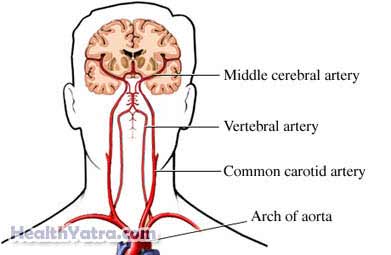تعريف
Hypoxic ischemic encephalopathy (HIE) is a condition in which the brain does not receive enough oxygen.
HIE can be fatal. Brain cells can begin dying within as little as five minutes without oxygen. The disease can also cause long-term damage, including intellectual disability, seizures, and الشلل الدماغي.

أسباب
There are a variety of causes of HIE. Any injury and many health conditions can cause a lack of oxygen to the brain. Some common causes are:
- توقف التنفس
- Blocked or ruptured blood vessel
- أول أكسيد الكربون or cyanide poisoning
- Drug overdose
- الغرق
- Lack of oxygen due to smoke inhalation
- Extremely low blood pressure
- Strangulation
- توقف القلب
- Carbon monoxide poisoning
- High altitudes
- الاختناق
- Compression or injury to the trachea that reduces or stops breathing
- Complications from general anesthesia
- Diseases that cause paralysis of the respiratory organs or muscles, such asmyasthenia gravis and Guillain-Barre syndrome
عوامل الخطر
Any injury, complication, or condition that causes the brain to have a reduction in blood flow and oxygen is a risk factor for HIE.
الأعراض
تشمل الأعراض ما يلي:
- Mild case:
- Difficulty paying attention
- Poor judgment
- ضعف التنسيق
- Intense emotions
- Extreme drowsiness
- Severe oxygen deprivation:
- النوبات
- فقدان الوعي
- Blue-colored skin or lips
- صعوبة في التنفس
التشخيص
A physical exam will be done. Typically, the history is the most important factor in making the diagnosis.
وقد تشمل الاختبارات التالية:
- Your bodily fluids may need to be tested. This can be done with blood tests.
- قد يلزم التقاط صور لهياكل جسمك. يمكن القيام بذلك باستخدام:
- الاشعة المقطعية
- تصوير الرنين المغناطيسي
- مخطط صدى القلب
- الموجات فوق الصوتية
- Your heart and brain activity may be tested. This can be done with:
- Electrocardiogram (EKG, ECG)
- Electroencephalogram (EEG)
- أثار اختبار الجهد
العلاج
Treatment depends on the underlying cause of the condition, as well as the severity of the damage to the brain. Treatment options include:
- Life-sustaining treatment—If brain function has stopped, but damage is not yet extensive, life-sustaining treatment is given.
- Mechanical ventilation —This may be used if you are unable to breathe without assistance.
- Treatments for the circulatory system—Treatments are given to maintain heart function and control blood pressure.
- Seizure control—Medicine and general anesthesia may be given to control seizures.
- Cooling—Hypoxic brain damage is often caused by heat. Cooling blankets or other means of cooling may be applied to reduce the body’s temperature.
- Hyperbaric oxygen treatment —This treatment is used in cases of carbon monoxide poisoning.
الوقاية
In most cases, HIE is sudden and cannot be prevented. CPR may be given to prevent significant or long-term brain damage after the oxygen supply has been reduced.
